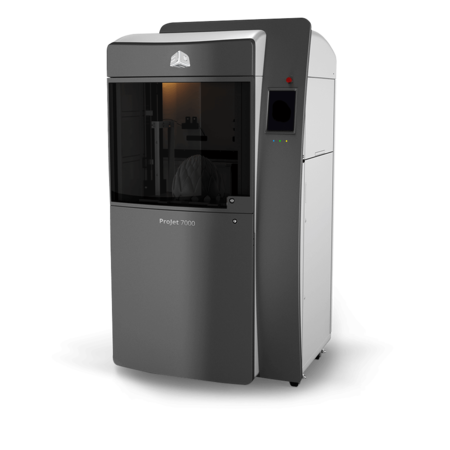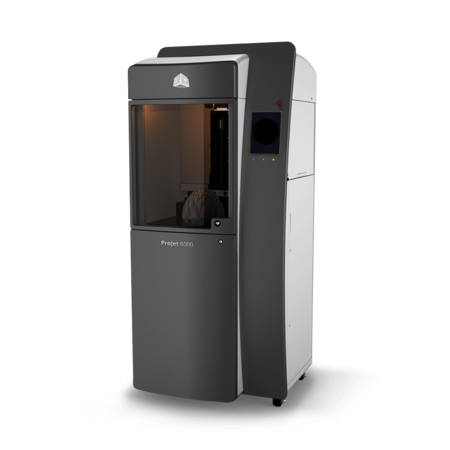"Right out of the machine, we have found its parts to be superior to parts from other systems we have in-house at this same stage. The sidewall quality is spectacular and the detail is crisp."
The very first customer job that Todd Reese, president of Noblesville, Indiana-based rapid prototyping service provider Realize Inc., fed his ProJet® stereolithography (SLA) 3D printer was a 40-piece run of stout bottle toppers with extremely intricate detail. The print tray was completely full. Realize Inc.’s 3D Systems’ Applications Engineer had hoped the new machine would be eased into service, but that’s not Reese’s style.
Reese was surprised to come in the next morning to find his ProJet SLA build was complete and that the build had taken only 16 hours. Medium-sized jobs that require ultra-high precision, like this one, explains Reese, are where the ProJet SLA proves its mettle. Reese is also excited about the printer's ability to use its entire 15” x 15” build area in high-resolution mode, compared to a older systems.
Unmatched Precision and Higher Throughput
Reese is a seasoned veteran of the rapid prototyping industry with more than two decades of experience and a focus in SLA technology. In that time, he’s run the gamut of SLA 3D printers including legacy 3D Systems equipment. In late 2013, Reese was faced with the need to bring in a new piece of equipment, and the ProJet SLA system, on paper, had many attributes that set the machine apart from his current fleet, yet it would also fit right in.
After getting acclimated to the new machine’s differences and working through a few software issues, the machine is paying big dividends in terms of throughput and quality for parts of all types.
“The quality of the parts being produced by our ProJet SLA system has lived up to my expectations,” Reese says. “Right out of the machine, we have found its parts to be superior to parts from other systems we have in-house at this same stage. The sidewall quality is spectacular and the detail is crisp. These are the finest SLA parts that I’ve seen from a 3D Systems machine.”
It’s a great combination of accuracy and throughput, the latter being enabled both by the larger high-definition build area but also by the time savings that the printer can deliver on a per-part basis.
Reese simplifies this combination of precision and speed by explaining it in terms of a twin-tip Sharpie® marker. He explains that the great thing about the newer SLA printers from 3D Systems is that is can draw the outline of the part with a small laser beam, likening it to the fine end of the marker, to achieve a precision aesthetic shell, while the bulk of the part is filled-in with a much larger laser beam, which he likens to the wide end of the marker. This feature allows for a drastic reduction in build time as compared to previous-generation equipment that employs a single laser beam size.
Fulfilling a Range of Needs
Realize Inc. specializes in SLA for a wide spectrum of clients in in virtually every industry, including consumer products, automotive, medical devices and musical instruments. Considering the ProJet SLA accuracy, Realize Inc. uses it “across the board” for everything from freeform sculpture-like models to early concept models to form-and-fit engineering prototypes. The VisiJet® SL Impact material that Reese is running in the machine is robust enough to support challenging functional assemblies and a host of demanding applications as well.
Going Forward with the 3D Systems
The SLA printers are built for ease of use and consistent operation, making it a great addition to the manufacturing floor as well as the office. “Although we have the machine housed in our stereolithography lab, I could see it residing in an office environment,” he says. “So far, we’ve found the enhancements made to this machine have resulted in a machine that is easier to keep clean.”
The ProJet SLA is much more hands off than previous generation systems and does not necessarily require the user to be an expert in 3D printing, which is a huge benefit to new users. Reese does, however, miss some of the previous generation’s tools which allow for more manual control.

